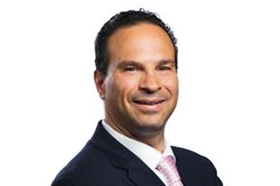In the war for talent, not-for-profit organizations and higher education institutions are having some of the same skirmishes as businesses in other industries. Like most employers, they’re dealing with high turnover, staff and faculty desires for flexibility, and varying preferences caused by generational differences.
In a Grant Thornton survey of 1,500 U.S. employees across all industries (see “Assessing the state of American workers”), last year one-third of respondents were actively looking for a new job at a different organization. Even though the survey didn’t single out not-for-profits, the results can readily be extrapolated to them. For example, colleges and universities have said that if they could retain staff for about two years, those employees would come to appreciate the more balanced quality of life and pace offered by their institution and would stay. However, more chief HR officers in higher education settings now say they are increasingly challenged to retain their people for even two years.
The Grant Thornton survey also found that 79% of employees across virtually all industries want flexibility in deciding where and when they work. In fact, they want it so much that 48% would give up 10-20% of a future salary increase for that flexibility.
Metaphorically speaking, younger workers might want their benefits served up as iced tea, and older workers, hot tea. In response, employers, including not-for-profits and higher education institutions, may be blending their offerings. As a result, their workers are getting lukewarm tea, and practically no one is satisfied.
Often organizations and institutions have constrained budgets, making these challenges even more difficult. However, they also may have a unique advantage — their focus on a meaningful mission, which appeals to workers, especially the millennial and Generation Z populations. Those two groups now comprise 50% of most sectors.
In this environment, knowing the lay of the land is the first step in getting an action plan initiated.
Start by listening to employees
Not-for-profits and higher education institutions have the opportunity to deeply understand their employees’ unmet needs and pain points. They should begin by stepping back and asking “What is our situation? Do we need to improve recruitment or retention results?” The answer today is almost always yes — if they want to hire and retain the right talent.
Start the process by listening intently to your employees by way of surveys or discussions with them — preferably both. If you choose discussions, decide whether to have them conducted by managers or by an external resource.
Once you have identified what workers want and have evaluated your total rewards strategy and supporting benefits, you can then determine what may need to be done and how to get there. If leaders can brainstorm and apply a cost-effective, on-brand solution that reduces employees’ pain while meeting their needs and concerns more effectively, they will differentiate their organization to their employees. And that will improve worker “stickiness.”
Consider these pros and cons for surveys and discussions
Surveys
Employee surveys can be effective if employees, faculty and staff answer them honestly, and organizations and institutions act on the results. Every time you conduct a survey, send a summary to respondents thanking them for participating, stating the findings and outlining specific corresponding actions, even if they’re at the 40,000-foot level. Surveys are only as good as the options employees have for responding, and their managers’ follow-up communication and actions.
Discussions
If workers believe their manager is looking out for their best interests, they may be honest when discussing their compensation and benefits needs and preferences with their manager. But they may think it’s safer to say only what they think the manager wants to hear. One solution is to have an external organization conduct those individual discussions and provide the results anonymously.
Personalize benefits based on workers’ priorities
Many employees believe the benefits or total rewards from their current employer are no different from what they could find elsewhere. So, they may conclude they have no compelling reason to stay. And if everything is the same, the difference becomes compensation. To counter that belief, work toward a personalized approach that offers relevant, meaningful benefits to meet individual needs. The following are a few ideas:
Scholarships for employees’ children or strong tuition remission/reimbursement programs.
Corporations are considering offering scholarships for workers’ children, an approach that some not-for-profits could adopt or expand. A $2,000 scholarship, for example, would be a tax-free benefit that could motivate employees to stay with their employer for additional years while their children are in school.
Student loan debt assistance.
Employers traditionally have focused on providing “normal” healthcare and wellness benefits. However, because of the significant debt burden many students face at graduation, many new workers are especially concerned about financial health and wellness. In addition, debt concerns may extend to mid-career job changers who have personally invested in resources to retool for their new career or role.
Emerging research suggests that many employees with significant college debt would rather defer investment in their 403(b) or 401(k) for five years if an employer would pay, for example, an extra $3,000 per year toward that debt. We believe this option could support and enhance a benefits structure that would help retain staff for those important first two or three years, after which employees might have adjusted to and come to appreciate the unique value of not-for-profit and higher education work/life cultures.
Professional growth.
Workers, especially Gen Zers, often value growth and learning experiences over short-term monetary rewards. They want rapid progress in their work lives and professional development. Not-for-profits, colleges and universities could sell their mission to candidates more effectively by preparing to offer concrete answers to questions from candidates and workers, such as:
- How will you support my professional growth or career path?
- I want to be promoted. Would you give me a scholarship to apply toward a degree or certification?
- How would you support my belief and desire that we should do social good in our community?
- What sort of service opportunities do I have?
Factor in the perceived value of benefits
The current reality is that many not-for-profits and higher education institutions have constrained budgets, which can make them less competitive in the struggle for talent. Even if you can’t continually increase or even modify your benefits offerings, you may want to consider repositioning some funds and reinvesting in meeting employees’ needs or resolving their frustrations. The value of a benefit is in the eye of the beholder. A properly designed and implemented employee preference optimization analysis can often demonstrate that a particular benefit may cost $1,000 for your organization or institution but offer $2,000 or more in perceived value to your employees.
For example, a not-for-profit hospital found that nurses with three to five years of experience were providing world-class care to their patients but were not able to care for their aging parents at home the way they wanted to. The hospital asked, “What if we offered your parents free access to a specialist in the system a couple of times a year as part of your benefits package?” The nurses believed this advantage — even if available only once per year — offered them the same value as a 25% salary increase. Turnover decreased from 30% to 15-19% when this was implemented.
What is most important
Especially during our current struggle to hire and retain talent, begin by listening carefully to understand the needs of your most critical asset — your employees. Think like a marketer and understand what they want but aren’t getting today. You then have the opportunity to create a customized plan to offer benefits and development options you know your workers will value. This will differentiate you from those competing with you in the war for talent, which is likely to continue for years to come.
Contacts:



Dennis J. Morrone
National Managing Principal, Not-for-Profit & Higher Education Industries
Grant Thornton Advisors LLC
Partner, Audit Services, Grant Thornton LLP
Dennis Morrone is the National Managing Partner of Grant Thornton's Not-for-Profit & Higher Education Practices.
Iselin, New Jersey
Industries
- Not-for-profit & higher education
Service Experience
- Advisory
- Operations and performance
- Audit & Assurance
- Finance Transformation
- Employee Benefit Plan Audits
- Transaction advisory



Daniel Romano
Principal, Tax Services, Not-for-Profit & Higher Education Industries
Grant Thornton Advisors LLC
Dan is a partner and leads Grant Thornton’s Notfor-Profit Tax practice which serves tax-exempt organizations including colleges & universities, hospitals, private foundations, cultural institutions & trade associations throughout the country.
New York, New York
Industries
- Not-for-profit & higher education
Service Experience
- Tax
More not-for-profit insights

No Results Found. Please search again using different keywords and/or filters.
Share with your network
Share